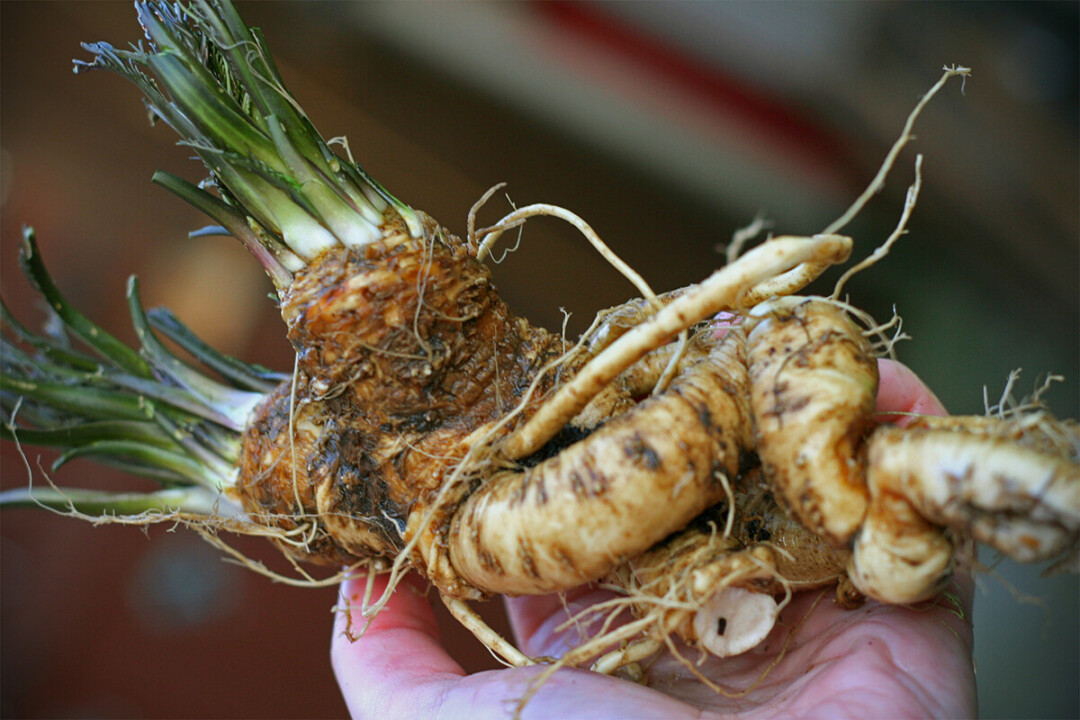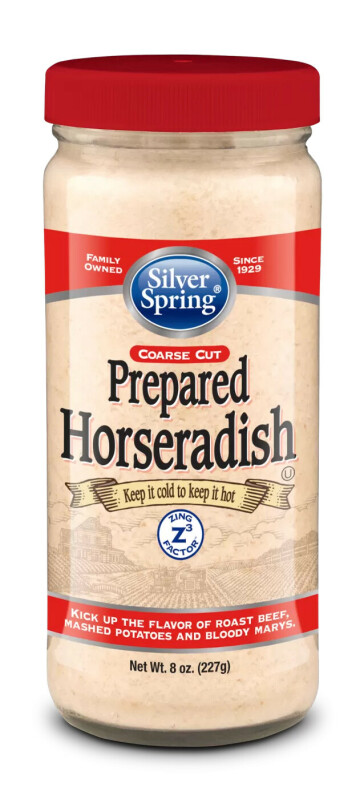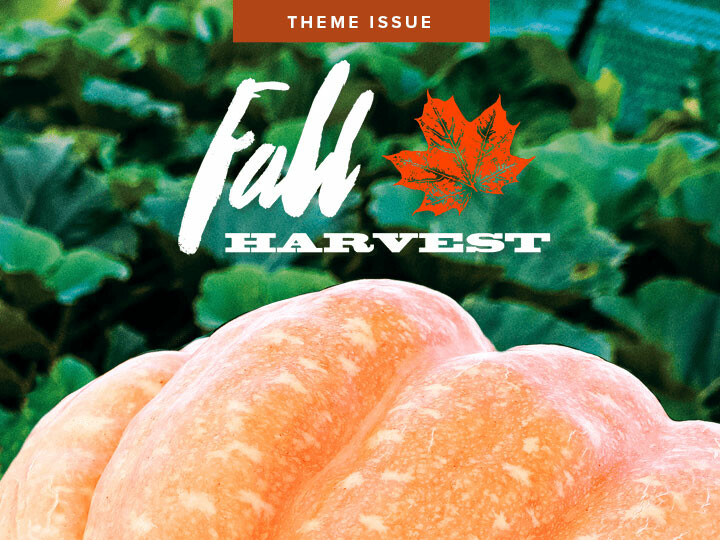DRIVEN TO TEARS: Processing Horseradish Harvest Isn’t for the Faint of Heart
producing this condiment requires plenty of protective gear

“Want to make horseradish?” my sister asked.
I hesitated for only a minute before saying yes. Our family loves horseradish, and my son-in-law practically eats it out of the jar with a spoon. My sister and brother-in-law, along with Sammi, a Siamese cat, and Walter, a tabby who adopted them a few years ago, live on a hobby farm north of Jim Falls where they raise beef cattle, apples, and a magnificent garden. Horseradish is one of the crops that grows wild there. “Sounds like fun,” I said, not knowing what I was in for. I did wonder later about our wisdom when we live in the area where the world’s largest horseradish producer is based. Silver Spring Foods in Eau Claire was founded in 1929 when Ellis Huntsinger started growing horseradish. He, too, prepared it by hand back then. But he wouldn’t recognize the company now, a large employer, which makes many varieties of horseradish and mustard.

Still, there’s something satisfying about producing something yourself whether it’s jam, pumpkin puree or, in this case, creamed horseradish. “We’ll make it in the garage,” my sister said. We were basking in warm weather at the time we planned this event. Of course, the weather turned cold two days beforehand. When I got there in the morning, my sister was sitting with a warm coat, a large plastic tablecloth under her feet to catch the peelings, and a small table full of horseradish roots. I had never seen horseradish in the rough before, but my sister reminded me that our father had made his own many years ago. Peeling it looked like a formidable task. The large part of the root was gnarled and scarred, and appendages poked out on several sides. With an electric heater to warm our feet, we began. The heater only worked so well as we had to leave the overhead door open to let the horseradish scent dissipate.
I had brought my best peeler, but even with that the horseradish wasn’t easy to peel. I had to cut off the appendages in order to peel the main root and then peel those appendages. The odor wasn’t too bad at this point. When the peeling was finally done, my sister took the peeled roots into the house to wash them while I cleaned up the floor.
If I breathed too deeply, my throat burned. I had to turn my head and close my eyes and just keep turning the handle. ... When I couldn’t stand it one more minute, my brother-in-law took over until he couldn’t see.
She had tried a blender the last time she made horseradish, but the blender flew into pieces from the tough roots. This time we used the largest attachment for the old-fashioned grinder that my sister had inherited from my mother, hooking the whole apparatus to a heavy table. We had to press the handle in at the same time as we turned it because the nut that held the handle on was missing, and it was an odd size that they weren’t able to replace. I tried first, but the handle wouldn’t budge. This was one tough root, so my sister had to slice the horseradish roots into slender lengths. She poked them down into the grinder while my brother-in-law and I took turns turning the grinder handle. I wore my husband’s safety goggles, a mask, and rubber gloves to take my turn, but tears rolled down my cheeks, and my nose immediately began to run. If I breathed too deeply, my throat burned. I had to turn my head and close my eyes and just keep turning the handle which kept coming off. When I couldn’t stand it one more minute, my brother-in-law took over until he couldn’t see. In between we blew our noses, wiped our eyes, and cleaned our hands. My sister had a face shield which turned out to be as worthless as the goggles in the face of horseradish heat.
We finally finished the job and then quickly proceeded to mix half and half, sugar, and vinegar with the ground horseradish before it turned dark. Jarring it, we froze it for this year’s use.
When I woke up the next morning, my shoulder hurt from cranking the handle. My brother-in- law said he had HH – “Horseradish Hangover” – as his eyes and nose still burned. I wouldn’t have missed the experience, but I think I’ll stick with Silver Spring products in the future.

